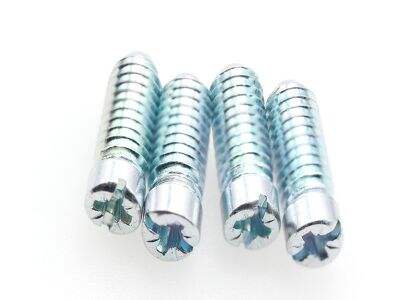Ever tried hanging a picture on the wall and the nail bent or the screw ended up crooked? It can be very frustrating. The right screw (or nail) is everything, which is why it matters which one you choose. A good selection can help your project remain solid and healthy for a long time. Let us get into the different kinds of screws and nails and how to choose the best one for your purpose.
Why Use X or Y? Making The Right Choice For Your Project
Please also consider what you are using material-wise before picking a screw or nail. Fasteners vary depending on the materials used. Common materials include wood, metal, plastic, and concrete. For instance, if you’re dealing with wood, then you need to use a screw or nail that was designed specifically for use with wood. Those fasteners are a new generation of fasteners that tighten wood tightly enough and have bonding properties. But on the other hand, if you work metal, you will be in need of a steel or iron screw or nail. These fasteners are stronger and better at holding metal pieces together.
Next, consider how heavy the item you are hanging is. If you are hanging a heavy mirror, you will need a sturdy screw or nail capable of supporting its weight. If the fastener is not strong enough, it could pull out of the wall and cause the mirror to come crashing down. A QD screw or nail strong enough to ensure that a light fixture will remain mounted to the ceiling should also be used if that is the case. The proper fastener will keep them safe and secure.
How to Choose the Right Fastener for Varied Materials
One can choose from various screws and nails. Let’s review a few that might be familiar to you so that you better understand them.
Screws:
Wood Screws: These screws are designed specifically for use with wooden materials. They are available in many sizes and lengths, so you can find the suitable type for your project.
Sheet Metal Screws: Used to hold metal sheets together. They are powerful and designed to hold onto metallic materials.
Drywall Screws: These screws are for attaching drywall to wood or metal studs. There are meant to grip the drywall tightly.
Nails:
Framing Nails — These nails are used for building frames and general construction.
NU66: Finish nails like those for furniture and trim work. So they leave a smaller hole that can easily be filled.
Provided they have wings on the end and are common, Roofing Nails: These are the nails for roofing These fasteners are designed to grip the roofing material tightly.
Choosing the Right Screws and Nails For Strength and Durability
Using the correct screws and nails can ensure the strength and durability of your project. Because if the Screws and nails you choose are of a low quality, they can easily break. This can destroy your project or even hurt you if something falls. So, the key here is to select high quality screws and nails made for the particular task at hand. A quality fastener will go a long way in ensuring your project remains strong and safe.
What You Need to Know
There are a couple of key things to keep in mind when selecting screws and nails:
Length: The length of a screw (or a nail) is critical to how well it will do its job. If it’s too short, it won’t hold things together tightly. If it’s too long, it can shred through the material, causing damage.
Diameter: This reflects how thick the screw or nail is. If it’s too thin, it won’t be sturdy enough to support the weight. If it is too thick, it can split the wood or make the material you are working on chip.
Head: The head of the screw or nail is the visible and grabbable part. A flat head tapping screw /nail will sit flush with the material and look nice and clean. A round head screw or nail will protrude a little, which may be acceptable for some projects, and not for others.
Maximising Your Fasteners
Using the right tool for the job will make sure your screws and nails are used properly. However, if you can use a power drill or a hammer, you are going to work a lot faster, and your work is going to be a whole lot easier than using a manual screwdriver or hamer. Make sure you are also using the right drill bit or driver for your self cutting screws or nail. If you use the wrong tool, you may snap the screw or nail and render it ineffective — and potentially do extra work for yourself.
To sum up, it might seem small, but selecting the proper screw or nail is critical to the well-being of your project. Just keep in mind to consider the kind of material you are fixing into, the weight of what you are hanging and the quality of the screw or nail. By keeping these guidelines in mind, you can produce hardworking results in your projects. With some careful choices your work can be solid and you can enjoy the result.












































